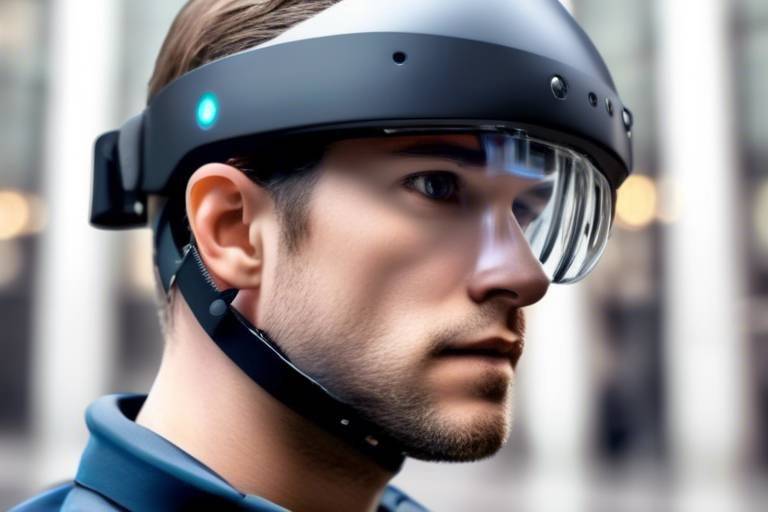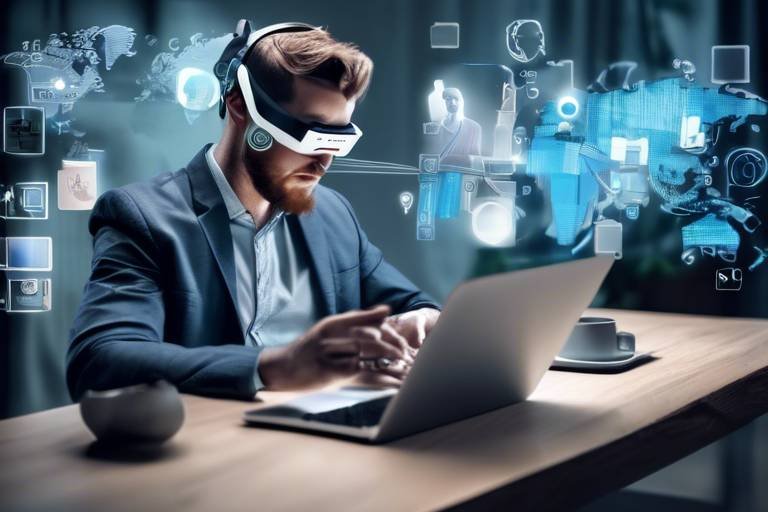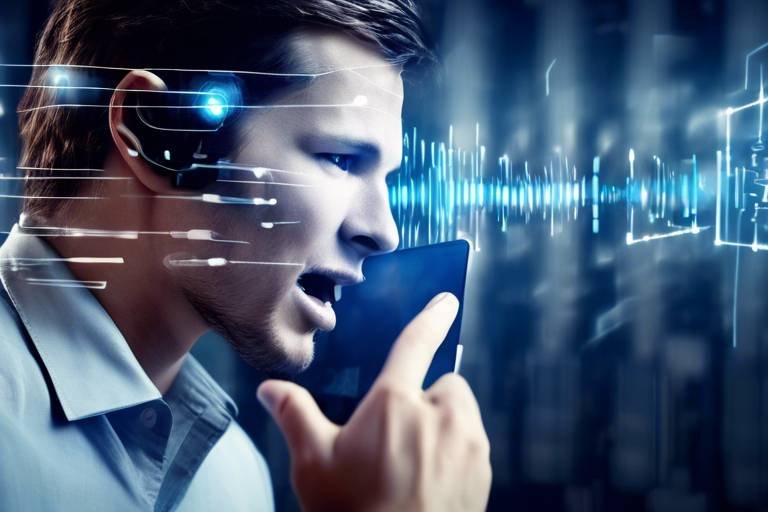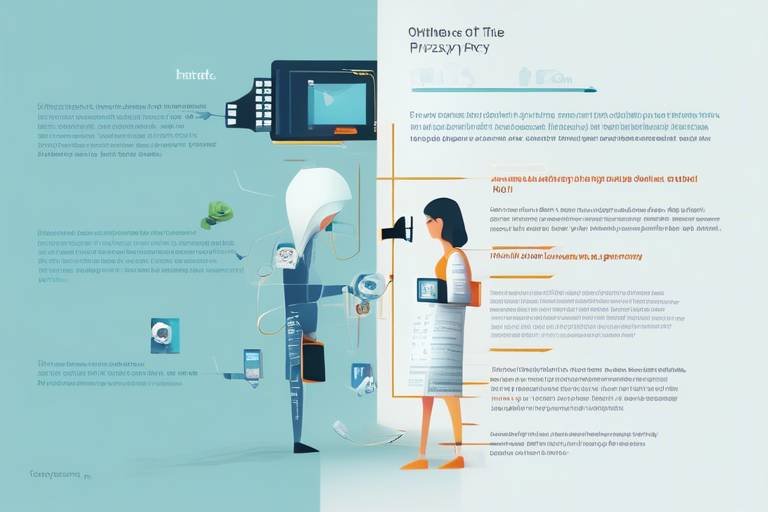How Wearable Tech Will Change Personal Safety
In a world where safety concerns are more pronounced than ever, wearable technology is stepping up to the plate, ready to revolutionize how we think about personal security. Imagine a future where your watch not only tells you the time but also keeps you safe, alerts emergency services in case of an accident, and even monitors your health in real-time. This isn't science fiction; it's happening now! As wearable tech continues to evolve, its integration into our daily lives will not only enhance our safety but also empower us to take control of our well-being.
Wearable devices, from smartwatches to fitness trackers, have come a long way. Initially designed to track physical activity, these gadgets have transformed into sophisticated tools that monitor various aspects of our health and safety. The advent of GPS technology, biometric sensors, and connectivity features has paved the way for innovations that can alert us to potential dangers before they escalate. The question is, how exactly will this tech change our approach to personal safety?
Firstly, wearable technology is enhancing our ability to respond to emergencies. Imagine you're out for a jog, and you suddenly feel unwell. With a simple tap on your smartwatch, you can send an emergency alert to your loved ones or local authorities. This real-time data transmission allows for quicker responses, potentially saving lives. Furthermore, the integration of wearables with smart home systems means that you can control your environment remotely. For instance, if you’re away from home and receive a notification about a security breach, you can lock your doors or alert the police without being physically present.
Moreover, wearable tech is proving invaluable for monitoring vulnerable individuals, such as the elderly or those with chronic health conditions. Caregivers can receive alerts about unusual health metrics or location changes, allowing them to respond promptly to emergencies. This level of monitoring not only enhances the safety of these individuals but also provides peace of mind for their families.
However, as we embrace these technological advancements, we must also consider the implications of data privacy. With wearable devices collecting sensitive information about our health and location, concerns about how this data is stored and shared are rising. It’s essential for manufacturers to implement robust data encryption and security measures to protect users' personal information. Moreover, educating users about potential privacy risks can empower them to make informed decisions, ensuring that they can enjoy the benefits of wearable tech without compromising their safety.
As we look to the future, the potential for wearable safety technology is enormous. Innovations in artificial intelligence and machine learning are set to enhance the capabilities of these devices even further. Imagine a smartwatch that not only alerts you when your heart rate spikes but also predicts potential health issues based on your historical data. The possibilities are endless, and they all point towards a future where personal safety is seamlessly integrated into our daily lives.
- What types of wearable tech are available for personal safety? There are various devices including smartwatches, fitness trackers, and specialized medical alert systems designed for safety.
- How does wearable tech improve emergency response? Wearables can send real-time alerts and location data to emergency services, allowing for quicker response times.
- Are there privacy concerns with wearable technology? Yes, wearable devices collect personal data, which raises concerns about how that data is protected and used.
- What future advancements can we expect in wearable safety technology? Expect improvements in AI and machine learning, which will enhance health monitoring and predictive analytics capabilities.

The Evolution of Wearable Technology
Wearable technology has undergone a remarkable transformation over the past few decades. Initially, these devices were primarily focused on health and fitness, with simple pedometers and heart rate monitors paving the way for more advanced innovations. Today, we find ourselves in an era where wearables are not just about tracking steps or calories burned; they are sophisticated gadgets that can monitor our health, enhance our safety, and even connect us to the wider smart ecosystem around us.
In the early days, wearables were bulky and often uncomfortable, but advancements in technology have led to the creation of sleek, stylish devices that people actually want to wear. Think about the transition from the clunky early smartwatches to today's slim and fashionable models that can seamlessly blend into any outfit. This evolution has made wearable technology more accessible and appealing to a broader audience, which is crucial for widespread adoption.
As we look back at the evolution of wearable tech, we can identify several key milestones that have significantly influenced personal safety:
- Fitness Trackers: The first wave of wearables focused on physical activity, encouraging users to stay active and healthy.
- Smartwatches: These devices introduced notifications and app integration, allowing users to stay connected while on the go.
- Health Monitoring Devices: Innovations like ECG monitors and blood oxygen sensors have transformed wearables into essential health management tools.
- GPS and Location Tracking: The integration of GPS technology has allowed for real-time tracking, which is invaluable for personal safety.
Moreover, the rise of the Internet of Things (IoT) has further expanded the capabilities of wearable technology. Now, wearables can communicate with other smart devices, creating a network of interconnected gadgets that enhance personal safety. For instance, imagine a scenario where your smartwatch detects a fall or a sudden health issue and immediately alerts emergency services while also notifying your family members. This level of integration not only improves response times but also provides peace of mind, knowing that help is just a heartbeat away.
In summary, the evolution of wearable technology has been nothing short of revolutionary. From basic fitness trackers to advanced health monitors and smart devices that enhance personal safety, the journey has been driven by innovation and the desire to improve our quality of life. As we continue to embrace these technologies, the future holds even more promise for enhancing personal safety through wearable tech.

Impact on Emergency Response
Wearable devices are not just the latest trend; they are revolutionizing the way emergency response systems operate. Imagine a world where a simple wristband can alert authorities at the push of a button, providing real-time data about your location and health status. This isn’t science fiction; it’s the reality of wearable technology today. These devices are designed to keep you safe by ensuring that help is just a heartbeat away.
One of the most significant impacts of wearable tech on emergency response is the ability to transmit real-time data. For instance, if someone experiences a medical emergency, such as a heart attack, their wearable device can detect irregular heart rhythms and automatically send an alert to emergency services. This immediate response can be the difference between life and death. The data collected can include vital signs, location, and even the user’s medical history, allowing first responders to arrive prepared for the situation they are about to encounter.
Moreover, the integration of wearables with mobile applications enhances communication between users and emergency services. When a user activates an alert, not only is help dispatched, but the app can also share critical information with responders, such as allergies or existing medical conditions. This level of preparedness is unprecedented and can dramatically improve the outcomes of emergency situations.
Another exciting development is the incorporation of geolocation technology in wearables. This feature allows emergency responders to pinpoint the exact location of an individual in distress. In urban environments, where every second counts, this capability can lead to faster response times. Consider a scenario where a hiker gets lost in a remote area; their smartwatch can send their coordinates to rescue teams, ensuring they reach the individual swiftly.
Wearable devices also play a crucial role in enhancing personal safety in public spaces. For example, some smartwatches now come equipped with a "panic button" feature. When pressed, it can alert friends, family, or authorities, providing them with your location and a distress signal. This feature is particularly beneficial in situations where verbal communication is impossible, such as during an assault or medical emergency.
In addition to physical safety, the emotional comfort that these devices provide cannot be overstated. Knowing that you have a safety net in the form of wearable technology allows individuals to go about their daily lives with a sense of security. Whether you’re jogging in the park or traveling alone, the peace of mind that comes with having a wearable device can be invaluable.
As we look to the future, the integration of wearables with other technologies, such as smart home systems, is set to enhance personal safety even further. Imagine being able to control your home security system directly from your wrist. If an intruder is detected, your wearable could automatically lock doors, turn on lights, and alert authorities—all without you having to lift a finger. This seamless connection between devices will create a comprehensive safety ecosystem that protects individuals in various environments.
In conclusion, the impact of wearable technology on emergency response is profound. With their ability to provide real-time data, enhance communication, and integrate with other safety systems, these devices are paving the way for a safer future. As technology continues to evolve, we can expect even more innovative solutions that prioritize personal safety, making the world a more secure place for everyone.
- How do wearable devices alert emergency services? Wearable devices can automatically send alerts to emergency services when a user experiences a medical emergency or presses a panic button.
- Can wearables track my location during an emergency? Yes, many wearable devices come equipped with geolocation technology that allows emergency responders to pinpoint your exact location.
- What kind of data do wearables collect during emergencies? Wearables can collect vital signs, medical history, and location data, which can be crucial for emergency responders.
- Are wearable devices safe from hacking? While no device is entirely immune to hacking, implementing robust data encryption and security measures can help protect personal information.

Integration with Smart Devices
Imagine a world where your wearable tech not only tracks your health but also seamlessly integrates with your home environment. This is not just a futuristic fantasy; it's happening now! The integration of wearables with smart devices is revolutionizing personal safety, providing users with a level of control and awareness that was previously unimaginable.
Wearable technology, such as smartwatches and fitness bands, can now communicate with various smart home devices. This connectivity allows users to monitor their surroundings and respond to emergencies promptly. For instance, if your wearable detects a fall or an unusual heart rate, it can send an alert to your smart home system, which could automatically lock doors, turn on lights, or even contact emergency services. This interconnectedness creates a safety net that enhances your peace of mind.
Furthermore, the ability to control smart devices remotely through wearables means that you can adjust your home environment even when you're not physically present. Here are some examples of what this integration allows:
- Remote Security Monitoring: Check live video feeds from your home security cameras directly from your smartwatch.
- Environmental Control: Adjust your thermostat or turn off appliances from anywhere, reducing fire hazards and energy consumption.
- Emergency Alerts: Receive notifications on your wearable device if your smart home system detects unusual activity or emergencies.
This synergy between wearable technology and smart home devices not only enhances safety but also empowers users with real-time information. Imagine being able to receive alerts about your home’s security while on a jog or being notified of a potential health issue while cooking dinner. The convenience of having all this information at your fingertips is not just a luxury; it’s a necessity in today’s fast-paced world.
Moreover, as technology continues to advance, we can expect even more sophisticated integrations. Future innovations may include AI-driven systems that learn your habits and preferences, enhancing the way your wearable tech interacts with your home. For example, your wearable might suggest locking your doors if it detects you’re away for an extended period, or it could automatically adjust lighting based on the time of day and your activity level.
In conclusion, the integration of wearable tech with smart devices is a game-changer in personal safety. It provides users with a proactive approach to managing their environment and responding to emergencies. As we continue to embrace this technology, the possibilities for enhancing our safety and security are boundless.

Smart Wearables and Home Security
In an age where technology is rapidly evolving, smart wearables are becoming an integral part of our daily lives, especially when it comes to enhancing home security. Imagine a scenario where your wristband not only tracks your fitness but also keeps you informed about your home’s safety. That’s the magic of smart wearables! These devices can seamlessly connect to home security systems, providing real-time updates and alerts directly to the user. This integration empowers individuals, allowing them to monitor their surroundings from virtually anywhere, whether they are at work, on vacation, or simply lounging on the couch.
One of the standout features of smart wearables in home security is their ability to send instant notifications. For instance, if a security camera detects unusual movement, your smartwatch can buzz with an alert, giving you the chance to check the live feed and act accordingly. This level of connectivity not only fosters a safer living environment but also instills a sense of control and peace of mind. You can think of it as having an extra set of eyes watching over your home, even when you’re not there.
Moreover, many smart wearables come equipped with features like GPS tracking and emergency buttons. In case of a break-in or any suspicious activity, users can quickly alert authorities with just a press of a button. This immediate response capability is crucial in ensuring personal safety and can make the difference in critical situations. Just like having a personal bodyguard, these devices provide an extra layer of security that can be life-saving.
As we delve deeper into the world of smart wearables, it's essential to consider how these devices contribute to a comprehensive security ecosystem. They often work in tandem with other smart home devices, such as locks, alarms, and cameras. For example, if a user receives an alert about a potential threat, they can remotely lock doors or activate alarms—all from their wearable device. This interconnectedness not only enhances security but also simplifies the user experience, making it easier to manage safety protocols.
However, while the benefits are substantial, it’s important to remain vigilant about potential vulnerabilities. As with any connected device, smart wearables can be susceptible to hacking and data breaches. Therefore, users should prioritize choosing devices that offer robust security features and regularly update their software to mitigate risks. In this ever-evolving landscape, staying informed and proactive is key to maximizing the advantages of smart wearables in home security.
In conclusion, the integration of smart wearables with home security systems is revolutionizing how we protect our living spaces. With real-time alerts, remote control capabilities, and enhanced connectivity, these devices are not just accessories; they are essential tools for modern-day safety. As technology continues to advance, we can only expect smarter solutions that will further empower individuals to safeguard their homes and loved ones.
- What are smart wearables? Smart wearables are devices such as smartwatches and fitness trackers that can connect to the internet and other smart devices, providing various functionalities including health monitoring and home security alerts.
- How do smart wearables enhance home security? They provide real-time notifications, allow remote monitoring, and can integrate with home security systems to help users manage their safety effectively.
- Are there privacy concerns with smart wearables? Yes, there are potential privacy risks, including data breaches. Users should ensure their devices have strong security measures in place.
- Can I control my home security system with a smartwatch? Absolutely! Many smartwatches allow users to control locks, alarms, and cameras directly from their wrist.

Remote Monitoring for Vulnerable Individuals
Remote monitoring technology is a game-changer for vulnerable individuals, such as the elderly or those with chronic health conditions. Imagine a world where your loved ones can be monitored in real-time without them feeling like they're being constantly watched. This is the beauty of wearable technology! These devices are designed to track vital health metrics, such as heart rate, blood pressure, and even location, providing peace of mind to caregivers and family members alike.
For instance, consider a scenario where an elderly person lives alone. With a wearable device, their heart rate and activity levels can be monitored continuously. If something seems off—perhaps their heart rate spikes or they haven't moved for an extended period—an alert can be sent to caregivers or family members immediately. This proactive approach allows for rapid intervention, potentially saving lives. It's like having a safety net that’s always there, ready to catch someone in need.
Moreover, the data collected from these devices can be incredibly insightful. Caregivers can analyze trends over time, identifying patterns that may indicate the need for medical attention or lifestyle changes. This capability not only enhances the safety of vulnerable individuals but also empowers caregivers with valuable information. They are no longer just reacting to emergencies; they are actively managing health and safety.
However, while the benefits are significant, it's essential to consider the implementation of such technology. Caregivers and family members must be educated on how to use these devices effectively. Training sessions or user-friendly manuals can help ensure that everyone involved understands how to interpret the data and respond appropriately. After all, technology is only as good as the people using it!
In addition, privacy concerns must be addressed. Vulnerable individuals deserve to have their data protected, and users should be informed about how their information is stored and shared. Implementing strong data encryption and security measures is crucial to maintaining trust in these technologies. It's a delicate balance between ensuring safety and preserving privacy, but with the right measures in place, it can be achieved.
Ultimately, the potential of remote monitoring through wearable technology is vast. It offers a sense of security for both vulnerable individuals and their caregivers, allowing for a more independent lifestyle while ensuring help is always just a heartbeat away. As technology continues to advance, we can expect even more innovative solutions that will further enhance personal safety and well-being.
- What types of wearable devices are best for remote monitoring?
Devices such as smartwatches, fitness trackers, and specialized medical alert systems are popular choices for remote monitoring. - How does remote monitoring improve safety?
It allows for immediate alerts in case of emergencies, enabling quicker responses from caregivers or emergency services. - Are there privacy concerns with wearable technology?
Yes, users should be aware of how their data is collected, stored, and shared. Ensuring robust security measures is essential. - Can caregivers access data remotely?
Most modern wearable devices allow caregivers to access health data through mobile apps, providing real-time insights.

Health Monitoring and Personal Safety
In today's fast-paced world, where health issues can arise without warning, wearable technology has emerged as a crucial ally in promoting personal safety. Imagine having a device on your wrist that not only tracks your fitness but also keeps a vigilant eye on your health metrics. This is the reality that smart wearables offer—an innovative fusion of technology and personal well-being. These devices monitor vital signs such as heart rate, blood pressure, and even oxygen saturation, alerting users to any abnormalities that could signal potential health crises.
For instance, a sudden spike in heart rate or a drop in blood oxygen levels can trigger an immediate alert, allowing users to take action before a situation escalates. This proactive approach to health monitoring can be a game-changer, especially for individuals with pre-existing conditions. Think of it as having a personal health assistant that never sleeps, always ready to provide insights and alerts when needed.
Moreover, the integration of health monitoring features with emergency services is paving the way for faster response times. In critical situations, such as a heart attack or stroke, every second counts. Wearable devices equipped with GPS and emergency alert systems can automatically notify medical professionals and loved ones, ensuring that help is on the way even before the user can make a call. This seamless connection between technology and emergency response is not just a convenience; it can save lives.
However, it’s essential to acknowledge that while wearable tech enhances personal safety, it also raises questions about data security and privacy. Users must be aware of how their health data is stored and shared. Understanding the importance of data encryption and privacy settings is crucial for anyone using these devices. By taking proactive steps to protect their information, users can enjoy the benefits of health monitoring without compromising their personal safety.
Ultimately, the role of wearable technology in health monitoring is a testament to how far we've come in personal safety innovation. As these devices continue to evolve, we can expect even more sophisticated features that not only track health metrics but also integrate with broader safety networks, providing a comprehensive safety net for users. The future looks bright, and with each advancement, we move closer to a world where personal safety is seamlessly intertwined with technology.
- What types of health metrics can wearable devices track? Wearable devices can track a variety of health metrics, including heart rate, blood pressure, sleep patterns, and oxygen saturation levels.
- How do wearables enhance emergency response? Wearables can send real-time alerts to emergency services and loved ones, ensuring timely assistance during health crises.
- Are my health data and privacy secure with wearable devices? It’s vital to choose devices that implement strong data encryption and allow users to manage their privacy settings effectively.
- Can wearables help prevent health emergencies? Yes, by monitoring vital signs and alerting users to abnormalities, wearables can help prevent potential health emergencies.

Privacy Concerns with Wearable Tech
As we embrace the wonders of wearable technology, it's essential to pause and consider the implications it has on our privacy. With devices that can track our every move, monitor our health, and even connect to our homes, the amount of personal data being collected is staggering. Imagine wearing a device that knows your heart rate, location, and even your sleep patterns—sounds convenient, right? But what happens when that data falls into the wrong hands? The potential for misuse is a real concern that can't be ignored.
One of the biggest issues is that many users are unaware of how their data is being collected, stored, and shared. Companies often have lengthy privacy policies that are easy to overlook, leaving consumers in the dark. To put it simply, if you’re not reading the fine print, you might be signing away your rights to your own information. It's crucial to understand that while these devices can enhance our safety, they also open the door to potential breaches.
Moreover, the integration of wearables with other smart devices adds another layer of complexity. For example, if your smartwatch is linked to your smart home system, a hacker could potentially gain access to not just your health data but also your home security. This interconnectedness can create vulnerabilities that savvy cybercriminals might exploit. Thus, the question arises: how can we enjoy the benefits of wearable tech while ensuring our data remains secure?
To address these concerns, manufacturers are beginning to implement data encryption and other security measures. Encryption transforms your data into a code that can only be read by authorized users, making it significantly harder for unauthorized individuals to access your information. However, even with these measures in place, user education is critical. Understanding the potential risks associated with wearable tech can empower users to make informed decisions about their privacy.
Here are some key privacy concerns that users should be aware of:
- Data Sharing: Many wearable devices share data with third parties, which can lead to unwanted exposure of personal information.
- Location Tracking: Continuous GPS tracking can reveal sensitive information about your daily routines and whereabouts.
- Health Data Security: Health-related data is particularly sensitive, and breaches can have serious consequences.
As we navigate this evolving landscape, it’s essential to strike a balance between enjoying the benefits of wearable technology and protecting our privacy. Engaging in discussions about data protection, advocating for transparency in data usage, and choosing devices with strong privacy policies can help mitigate these risks. The future of wearable tech is bright, but it’s up to us to ensure that our personal safety does not come at the cost of our privacy.
Q1: What types of data do wearable devices collect?
Wearable devices typically collect data such as heart rate, sleep patterns, physical activity, and location. Some advanced devices may also monitor blood pressure or glucose levels.
Q2: How can I protect my data when using wearable tech?
To protect your data, always read the privacy policy, enable two-factor authentication, and regularly update your device's software to ensure you have the latest security features.
Q3: Are all wearable devices equally secure?
Not all wearable devices have the same level of security. It's important to research and choose devices from reputable manufacturers that prioritize user privacy and data security.

Data Encryption and Security Measures
In today's digital age, where technology permeates every aspect of our lives, the importance of data encryption and security measures cannot be overstated, especially when it comes to wearable technology. These devices, equipped with the ability to collect sensitive personal information, require robust systems to protect users from potential breaches and unauthorized access. Imagine wearing a device that tracks your heart rate, location, and even your sleep patterns; if this data fell into the wrong hands, it could lead to serious privacy violations and security risks. Therefore, implementing effective encryption methods is essential to safeguard this sensitive information.
Data encryption works by converting information into a code to prevent unauthorized access. There are two primary types of encryption that are commonly used in wearable technology:
- Symmetric encryption: This method uses the same key for both encryption and decryption. It is fast and efficient, making it suitable for devices with limited processing power.
- Asymmetric encryption: This approach uses a pair of keys—a public key for encryption and a private key for decryption. Although it is more secure, it requires more computational resources.
In addition to encryption, other security measures are vital for ensuring the safety of data collected by wearables. These include:
- Regular software updates: Keeping device firmware up to date helps protect against vulnerabilities that hackers might exploit.
- Two-factor authentication: This adds an additional layer of security by requiring users to verify their identity through a second method, such as a text message or email.
- Secure data storage: Ensuring that data is stored securely, either on the device or in the cloud, is crucial to prevent unauthorized access.
Moreover, manufacturers must comply with data privacy regulations, such as the General Data Protection Regulation (GDPR) in Europe, which mandates strict guidelines on how personal data should be handled. This compliance not only helps protect users but also builds trust in wearable technology. Users should be aware of their rights regarding their data and how it is used. Transparency from manufacturers about data collection practices is essential for fostering confidence among users.
Ultimately, the responsibility for data security does not rest solely on manufacturers. Users must also take proactive steps to protect their information. This includes understanding the privacy settings on their devices, being cautious about sharing personal information, and regularly reviewing the permissions granted to apps associated with their wearables. By combining robust encryption methods with user awareness and education, we can create a safer environment for personal data in the realm of wearable technology.
- What is data encryption?
Data encryption is the process of converting information into a code to prevent unauthorized access. - Why is data encryption important for wearable technology?
It protects sensitive personal information collected by wearables from potential breaches and unauthorized access. - What are the common types of encryption used?
The two primary types are symmetric and asymmetric encryption. - How can users protect their data?
Users can protect their data by regularly updating their devices, using two-factor authentication, and understanding privacy settings.

User Education on Privacy Risks
As wearable technology continues to permeate our daily lives, it's crucial to understand the privacy risks associated with these devices. Many users may not realize that the data collected by their wearables can be incredibly sensitive, including health metrics, location tracking, and even personal preferences. This lack of awareness can lead to misuse of data or unintentional sharing of personal information. Therefore, user education is key to navigating these potential pitfalls.
To effectively educate users, it’s essential to provide clear information about how wearable devices collect and use data. For instance, many wearables sync with smartphone applications that often require users to agree to terms and conditions, which may include data sharing with third parties. Users should be made aware of what they are consenting to and how they can manage their privacy settings. Transparency from manufacturers regarding data usage is vital. This can help users make informed decisions about which features they want to enable or disable.
Moreover, educating users on best practices can significantly enhance their personal safety while using wearables. Here are some key points that should be emphasized:
- Regularly Update Software: Keeping the device's software up to date helps protect against vulnerabilities.
- Use Strong Passwords: Implementing strong, unique passwords for accounts associated with wearable devices can prevent unauthorized access.
- Review Privacy Settings: Users should frequently check and adjust their privacy settings to control what data is shared.
- Be Aware of Public Wi-Fi Risks: Avoid connecting wearables to public Wi-Fi networks, as these can expose data to hackers.
Additionally, it’s important for users to understand the concept of data ownership. Many people assume that once they share their data with a wearable device, they no longer have control over it. However, users should be aware that they have the right to request deletion of their data and to inquire about how it’s being used. This knowledge empowers users, allowing them to take charge of their personal information.
In conclusion, as the integration of wearable technology into our lives grows, so does the necessity for comprehensive user education on privacy risks. By equipping users with the knowledge and tools they need to protect their data, we can foster a safer environment where the benefits of wearable technology can be enjoyed without compromising personal security.
- What types of data do wearable devices collect?
Wearable devices can collect various data types, including heart rate, activity levels, sleep patterns, and location information.
- How can I ensure my data is secure?
To secure your data, regularly update your device, use strong passwords, and review your privacy settings.
- Can I delete my data from wearable devices?
Yes, most devices allow users to request data deletion. Check the manufacturer's guidelines for specific instructions.
- What should I do if I suspect my data has been compromised?
If you suspect a data breach, change your passwords immediately and contact the manufacturer for support.

Future Trends in Wearable Safety Technology
As technology continues to evolve at a breakneck pace, the future of wearable safety technology is nothing short of exhilarating. Imagine a world where your smartwatch not only tracks your steps but also predicts potential safety threats before they even happen! With advancements in artificial intelligence (AI), machine learning, and enhanced connectivity, the landscape of personal safety is set to undergo a radical transformation.
One of the most promising trends is the integration of AI algorithms that can analyze data in real-time to identify patterns and anomalies. For example, wearables equipped with AI could detect if a user’s heart rate spikes unexpectedly, signaling a potential medical emergency. In such cases, the device could automatically alert emergency services, providing them with critical information about the individual's location and health status. This type of proactive response could be a game changer in saving lives.
Moreover, the rise of 5G technology is poised to enhance the capabilities of wearable devices significantly. With faster data transfer speeds and low latency, wearables can communicate with other smart devices and systems in real-time. This means that your wearable could seamlessly interface with your smart home security system, alerting you to potential intrusions while you’re away and allowing you to take immediate action, such as locking doors or notifying authorities.
In addition to these technological advancements, there is a growing focus on biometric security features. Future wearables may incorporate advanced biometric sensors that go beyond heart rate and blood pressure monitoring. Imagine a device that can assess your stress levels and emotional state, alerting you to potential safety risks in high-pressure situations. This level of personalization can empower users to manage their safety proactively, rather than reactively.
Furthermore, the concept of community safety networks is gaining traction. Wearable devices could facilitate the creation of local safety networks where users can share real-time alerts about potential dangers. For instance, if someone detects suspicious activity in their neighborhood, they could send out an alert to fellow users, creating a ripple effect of awareness and vigilance. This communal approach to safety could foster a sense of belonging and collective responsibility among community members.
However, as we look to the future, it's essential to also consider the ethical implications of these advancements. With great power comes great responsibility, and the potential for misuse of personal data is a significant concern. Developers and manufacturers must prioritize data privacy and security to maintain user trust. This includes implementing robust encryption methods and transparent data handling practices.
In summary, the future of wearable safety technology is bright, filled with possibilities that can revolutionize personal security. From AI-driven alerts to community safety networks, the innovations on the horizon promise to make our lives not only safer but also richer in terms of connectivity and awareness. As we embrace these advancements, let’s also remain vigilant about privacy and ethical considerations, ensuring that technology serves to enhance our lives without compromising our personal security.
- What are wearable safety devices? Wearable safety devices are gadgets like smartwatches or fitness trackers that monitor health metrics and provide safety features such as emergency alerts.
- How can AI improve wearable safety technology? AI can analyze real-time data to detect anomalies, predict emergencies, and alert users or authorities promptly.
- What is the role of 5G in wearable safety technology? 5G technology enhances connectivity and speed, allowing wearables to communicate with other devices and systems more efficiently.
- Are there privacy concerns with wearable technology? Yes, as wearables collect personal data, concerns about data privacy and security are paramount, necessitating robust protective measures.
Frequently Asked Questions
- What is wearable technology?
Wearable technology refers to electronic devices that can be worn on the body, either as accessories or embedded in clothing. These devices often track health metrics, provide notifications, and enhance personal safety through various features.
- How does wearable tech improve personal safety?
Wearable tech enhances personal safety by providing real-time alerts, monitoring health and environmental conditions, and integrating with smart home systems to enable quick responses to emergencies.
- Can wearable devices help in emergency situations?
Absolutely! Many wearable devices can send emergency alerts, share location data with emergency services, and even monitor vital signs, allowing for quicker and more effective responses during crises.
- What are the privacy concerns associated with wearable technology?
Privacy concerns include the potential for unauthorized access to personal data, issues with data storage, and how information is shared with third parties. It's crucial to understand these risks to protect your information.
- How can I ensure my data is secure when using wearable devices?
To enhance security, use devices with strong data encryption, regularly update software, and be mindful of the permissions you grant to apps connected to your wearable tech.
- What future trends should we expect in wearable safety technology?
The future of wearable safety technology is bright, with advancements in artificial intelligence, machine learning, and improved connectivity. These innovations will likely lead to even more sophisticated safety features and user-friendly experiences.
- Are there specific wearables designed for vulnerable individuals?
Yes, there are wearables specifically designed for the elderly or individuals with health issues. These devices often include features like fall detection, health monitoring, and emergency alerts that help caregivers respond promptly.
- How can I choose the right wearable device for my needs?
Consider your primary safety needs, the features you value most (like health tracking or emergency alerts), and your budget. Research different devices and read reviews to find one that suits your lifestyle and safety requirements.



















